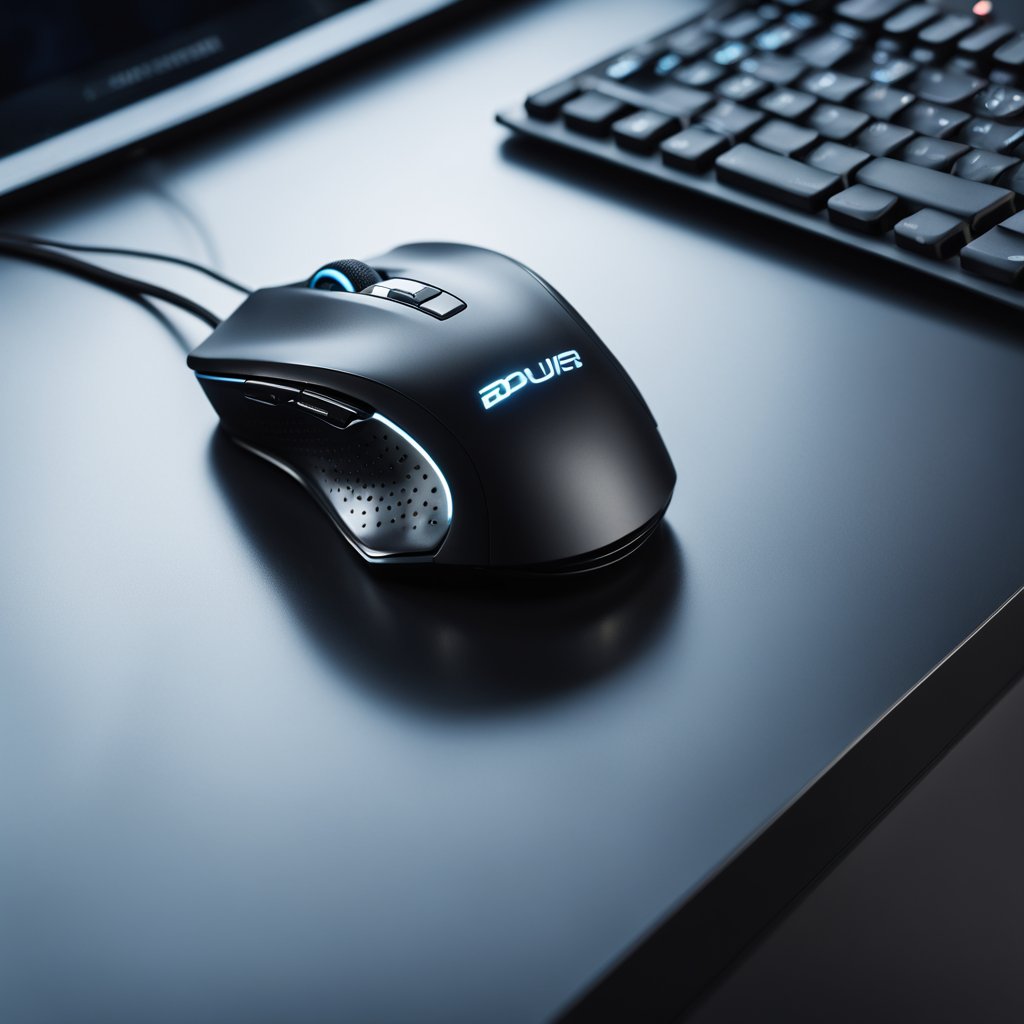Selecting the right gaming mouse is crucial for enhancing your performance in first-person shooter (FPS) games. I’ve found that the best FPS mice combine precision, comfort, and durability to provide a competitive edge. When I look at what’s currently on the market, I gravitate towards options that cater to myriad grip styles and offer high-end sensors for pinpoint accuracy. These characteristics are fundamental, as they directly impact your reaction times and in-game precision.

I’ve noted that wireless technology has significantly advanced, leading to a surge in wireless models that rival their wired counterparts in speed and reliability. Considering the needs of FPS enthusiasts like myself, a gaming mouse with a higher polling rate and customizable DPI settings is paramount to tailor one’s gaming experience. It’s not just about the technical specs, though; the mouse should also have a comfortable design that can be used for extended gaming sessions without causing fatigue.
The industry offers a broad selection of gaming mice specifically designed for FPS gaming. The best gaming mice are often those with responsive buttons, a consistent glide, and robust software customization. I always look for models that feel like natural extensions of my hand, ensuring seamless movement and control. While the market is full of options, only a handful stand out to truly elevate the gaming experience for dedicated FPS players.
Understanding FPS Mice

FPS mice are integral to my gaming setup, providing the control and responsiveness necessary for fast-paced gaming. The design of these mice is tailored specifically to enhance performance in first-person shooter games. Here, I’ll dive into their core attributes, the comparison between wired and wireless technology, and the difference between optical and laser sensors.
Core Attributes
DPI/CPI: The dots per inch (DPI) or counts per inch (CPI) of a mouse determines its sensitivity. A higher DPI means the cursor on the screen moves farther when the mouse is moved. This is crucial in FPS gaming, where precise aiming is essential.
Ergonomics: This refers to the design of the mouse, which should allow for a comfortable grip and minimal strain over extended periods of gaming. Good ergonomics can improve my overall performance and endurance during gameplay.
Weight: The mass of the mouse influences its maneuverability. Lighter mice, typically around 58g to 63g, allow for swift movements and can be less taxing on the wrist and arm muscles.
Polling Rate: This is the rate at which the mouse reports its position to the computer, measured in hertz (Hz). A higher polling rate means more frequent reporting, which can lead to smoother cursor movement on the screen.
Wired vs. Wireless Technology
Wired Mice: These are connected directly to the computer via a cable and tend to offer a more consistent and lag-free experience. My preference for wired mice leans on their reliability, as there’s no risk of battery depletion or interference.
Wireless Technology: Modern wireless mice have made significant strides in performance, with technologies like HyperSpeed and advanced sensors providing near-parity with wired counterparts. These mice offer greater freedom of movement without the constraint of a cable.
Latency: In the past, wireless mice experienced noticeable latency compared to wired mice. Today, the gap has closed considerably, and many wireless options boast minimal delays that are often imperceptible during gameplay.
Optical vs. Laser Sensors
Optical Sensors: These sensors use LED light to track movement on most surfaces. I find that they tend to offer better precision and are less sensitive to dust and surface irregularities. This makes them the preferred choice for FPS gamers seeking accuracy.
Laser Sensors: Laser mice use a laser to detect movement and can work on a wider range of surfaces, including glass. However, they may experience more variation in tracking and can be overly sensitive, which sometimes translates into less consistent aiming in-game.
By understanding these key aspects of FPS mice, I can make an informed decision when selecting my next gaming mouse, focusing on the features that are most important for elevating my gaming performance.
Evaluating Ergonomics and Comfort
When assessing FPS mice for ergonomics and comfort, I prioritize the mouse’s physical design. Let’s consider the aspects that influence how it feels during extended gaming sessions.
Shape and Size
The shape and size of a mouse are paramount for comfort, especially during prolonged use. It should conform well to the natural curvature of the hand. For larger hands, a mouse with a more pronounced arch can provide effective support, while smaller hands might find a flatter mouse more manageable. An ergonomic shape is designed to minimize strain; however, it’s crucial that the mouse’s dimensions fit the user’s hand size for optimal comfort.
Grip Styles
Three common grip styles are prevalent among gamers: palm grip, claw grip, and fingertip grip. A comfortable mouse for a palm grip user is typically larger with a rounded design to allow the whole hand to rest on the mouse. For a claw grip, a medium-sized mouse with room for the fingers to arch is ideal. Gamers who prefer the fingertip grip require a smaller and shorter mouse to easily touch with just their fingertips.
Weight Preferences
Finally, the weight of a mouse can significantly impact comfort. Some gamers prefer a heavy mouse that anchors the hand, while others opt for a lighter option that allows for quick movements and less fatigue. Many mice now come with adjustable weights to cater to individual preferences. It’s essential to choose a mouse whose weight feels natural and comfortable for your hand movements.
Performance Factors
When selecting the best FPS mouse for gaming, it’s essential to consider specific performance characteristics that can greatly influence in-game effectiveness. These factors include sensitivity and DPI, polling rate and latency, plus accuracy and precision.
Sensitivity and DPI
Sensitivity and DPI (Dots Per Inch) directly affect how much the cursor moves on the screen relative to the mouse’s movement. For FPS games, where quick and precise movements are crucial, a high DPI could provide an edge. A mouse that offers adjustable DPI settings allows me to match the mouse’s sensitivity to my individual needs, which can vary depending on the game or the on-screen action required.
- Typical DPI range for FPS mice: 400 to 12,000+
- Adjustable DPI settings: Yes
Polling Rate and Latency
The polling rate measures how often the mouse reports its position to the computer. Measured in Hertz (Hz), a higher polling rate translates to a mouse communicating more frequently, leading to lower latency and a more current representation of my movements. I look for a polling rate of 1000Hz which equates to the mouse relaying its position every 1 millisecond, ensuring low latency and a smoother cursor movement.
- Polling Rate options: 500Hz, 1000Hz
Accuracy and Precision
Accuracy is critical in FPS games, and the mouse sensor is a key component in ensuring my movements are precisely translated to in-game actions. Advanced sensors, such as Razer’s Focus Pro 30K, provide top-tier accuracy and consistency in tracking. Precision goes hand-in-hand with accuracy, eliminating erratic cursor movements or jitter, allowing for sharp and exact aiming in my gaming experience.
- Sensor example for high accuracy: Razer Focus Pro 30K
Key Features of High-End Models
In evaluating the upper echelons of FPS mice, I focus on their customization capabilities, durability, and cutting-edge technology. These attributes define their superiority in the competitive gaming peripherals market.
Customization Options
High-end FPS mice, such as the Razer Viper V2 Pro and Logitech G Pro X Superlight, offer extensive customization to fit any gamer’s preferences. These devices come equipped with numerous programmable buttons—Razer Viper V2 Pro has 8, while Logitech G Pro X Superlight offers less—but still customizable input options. The Razer Basilisk V3 stands out with its 13 programmable inputs when accounting for the scroll wheel configurations. Customization also extends to RGB lighting controls for aesthetic personalization.
Durability and Build
The build quality of a mouse is paramount, especially when it comes to products designed for frequent, intense gaming sessions. Mice like the Razer DeathAdder V3 Pro and Logitech G Pro exemplify premium build quality. They utilize durable materials and often feature high-quality optical switches that ensure a longer lifespan and consistent performance with millions of clicks guaranteed.
Advanced Technologies
The best high-end models incorporate technologies that push the limits of precision and responsiveness. Advanced optical sensors, such as the Focus Pro 30K sensor on the Razer Viper V2 Pro, offer incredible accuracy. The Logitech G Pro line typically includes its HERO (High-Efficiency Rated Optical) sensors, which are known for their energy efficiency and precision tracking. These advanced technologies ensure that every micro-movement is captured, giving gamers the responsiveness they need for competitive FPS gaming.
Selecting the Best FPS Mouse
When I look for the best FPS mouse, my focus is always on striking a balance between cost-effectiveness and performance. Identifying the right choice involves considering several pivotal factors.
Considering Budget and Price
My budget greatly influences the FPS mice I consider. While high-end gaming mice from brands like Razer and Logitech offer advanced features, there are also mid-range options that don’t compromise on quality or performance. For example, a gaming mouse such as the Endgame Gear XM2we delivers a sturdy experience at a mid-range price.
Brand and Model Comparisons
It’s crucial to scrutinize different brands and models. Razer’s Basilisk V3 and Logitech’s G PRO X SUPERLIGHT 2 exemplify premium gaming mice with high polling rates and ergonomic designs. Meanwhile, models like the NP-01S Wireless offer unique hybrid shapes catering to specific grip preferences. Comparing these details helps me pinpoint which model might enhance my FPS gameplay.
User Reviews and Recommendations
Reading user reviews provides real-world insight into the performance and longevity of FPS gaming mice. Recommendations often suggest that the Razer DeathAdder Elite excels overall for FPS games. I weigh these reviews against professional critiques to ensure I’m receiving a well-rounded perspective on which mouse might be the best choice for FPS gaming.
Frequently Asked Questions
In this section, I’ll cover some of the most important considerations when choosing an FPS mouse, based on features that can significantly impact your gaming performance.
What are the top features to look for in a mouse designed for FPS games?
For an FPS mouse, the primary features I suggest looking for are precision, ergonomics, and low latency. A comfortable grip and high-quality sensors are crucial for accuracy, while additional buttons may offer a competitive edge for quick access to game functions.
Which gaming mouse models are preferred by professional FPS gamers?
Professional FPS gamers often prefer models like the Endgame Gear XM2we and the Logitech Pro X Superlight for their precision and ultra-lightweight design, which allow for swift movements and better control during gameplay.
How does mouse DPI and polling rate impact FPS gaming performance?
Mouse DPI (Dots Per Inch) and polling rate directly affect how accurately and quickly the mouse cursor responds on the screen. Higher DPI and polling rate can offer more sensitivity and smoother tracking, which are beneficial in scenarios that require quick aim adjustments.
What are the advantages of a wired mouse over a wireless one for FPS gaming?
Wired mice typically offer the advantage of zero latency, which is crucial during gameplay where every millisecond counts. While wireless technology has improved, serious competitors often still opt for wired connections to eliminate any potential input lag.
How important is the mouse pad in enhancing performance in FPS games?
A high-quality mouse pad enhances the mouse’s responsiveness and tracking accuracy. Some pads are designed to provide a smooth glide while others offer more resistance; the choice can depend on personal preference and the type of sensor the mouse uses.
What are the best budget-friendly mice for competitive FPS gaming?
Competitive FPS gaming does not always require a hefty investment. Mice like the Corsair M65 RGB Elite offer robust construction and customization options at a more affordable price, delivering performance that meets the demands of competitive gaming.
Leave a Reply